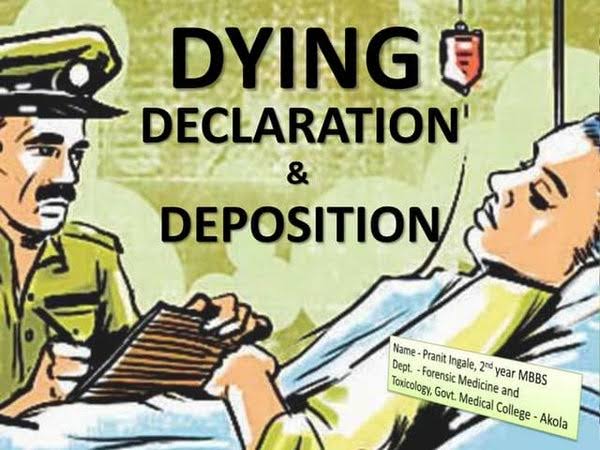N.K. Kapoor, J.@mdashThis is unsuccessful plaintiffs regular second appeal.
2. It is the ''case of the plaintiffs that they alongwith the defendants had a joint khewat before consolidation of holdings in the village. After consolidation of holdings their joint khewat was partitioned. Bhagwanan etc. got a separate khewat whereas land of Kehri and plaintiffs remained joint. Later on plaintiffs and Kehri also partitioned their Khewats. At the time of partition a passage was allowed by the Settlement Officer (Consolidation of Holdings) through the land to the plaintiffs vide order dated 18.4.1964. This order was set aside by this Court in a writ petition. Thereafter another effort was made by the plaintiffs to secure a passage but with no effect. Hence, plaintiffs filed the present suit claiming a right of passage over the land of the defendants for the beneficial enjoyment of their own, property as an easement of necessity.
3. Defendants contested the suit and denied that the plaintiffs have acquired a right of easement.
4. On the pleadings of the parties a number of issues were framed. However, the material issue pertain to the claim set up by the plaintiffs to the effect that he has acquired a right of easement of necessity over a piece of land belonging to the defendants. The relevant issue reads as :-
"(2) Whether the plaintiffs have got right of easement of necessity in respect of passage for the cattle and carts through the fields of the defendants from the highway of the fields and back from the land of the defendants for going to- their land as mentioned in para No. 1 of the plaint ? OPP." .
5. Trial court on considering the matter came to the conclusion that plaintiffs have no right of easement of necessity holding that even the land of the defendants was not connected with any public passage. Suit was accordingly dismissed. ,
6. Aggrieved by the judgment and decree of the trial Court, plaintiffs preferred an appeal. Lower appellate Court once again examined the matter in the light of evidence on record and Section 13 of the Easements Act. The lower appellate Court on examining the matter came to the conclusion that plaintiffs have failed to prove any of the essential ingredients as stipulated in Section 13 of the Act and so found no substance in their contention that they have acquired a right of easement over any portion of the property of the defendants. Resultantly, the appeal wets dismissed.
7. Learned counsel for the appellants has once again raised almost identical pleas which did not find favour with the Courts below. Reference has been made to Section 13 of the Easements Act to substantiate his view point. Section 13 reads as :-
13. Easements of necessity and quasi-easements.
Where one person transfers or bequeaths immovable property to another. -
(a) if an easement in other immovable property of the transferor or testator is necessary for enjoying ''the subject of the transfer or bequest, the transferee or legatee shall be entitled to such easement; or
(b) if such an easement is apparent and continuous and necessary for enjoying the said subject as it was enjoyed when the transfer or bequest took effect the transferee or legatee shall, unless a different intention is expressed or necessarily implied, be entitled to such easement;
(c) if an easement in the subject of the transfer or bequest, is necessary, for enjoying other immovable property of the transferor or testator, the transferor or the legal representatives of the testator shall be entitled to such easement; or
(d) if such an easement is apparent and continuous and necessary for enjoying the said property as it was enjoyed when the transfer or bequest took effect, the transferor, or the legal representative of the testator, shall, unless a different intention is expressed or necessarily implied, be entitled to such easement, Where a partition is made of the joint property of. several persons:-
(e) if an easement over the share of them is necessary for enjoying the share of another of them, the latter shall be entitled to such easement, or
(f) if such an easement is apparent and continuous and necessary for enjoying the share of the latter as it was enjoyed when the partition took effect, he, shall, unless a different intention is expressed or necessarily implied, be entitled to such easement.
The easements mentioned in this section, Clauses (a), (c) and (e), are called easements of necessity
Where immovable property passes by operation of law, the persons from and to whom it so passes are, for the purpose of this section, be deemed, respectively, the transferor and transferee.
8. Basements, at Clauses (a), (c) and (d) (e) are called easements of necessity. Concededly, the case of the plaintiffs is not covered by Clauses (a) and (c) for the precise reason that these relate to when there is a transfer of immovable property to another. Such is not the present case. Here the property has been partitioned by joint owners. So, the case can only be examined in the light of Clause (e) i.e. in case an easement over share of one of them is necessary for enjoying the share of another of them, the latter will be entitled to such easement and secondly, in case such an easement is apparent and continuous and necessary for enjoying the share of the latter as it was enjoyed when the partition took effect, There is document on record to suggest that the plaintiffs had been making use of an part of the property as a passage to go to their fields. It is for the first time that Settlement Officer vide order dated 18.4.1964 allowed the plaintiffs a passage. As noticed earlier, this order was set aside by this Court in, a writ petition. Thus, it is not a case where the plaintiffs had an earlier right to pass through the land of the defendants. This being the position, the plaintiffs have been unable to substantiate their case in terms of Clause (e) as well. Concededly, the partition of the joint holding has in no manner affected their right of passage, if it existed earlier. Precisely for this reason, the lower appellate Court held and rightly so that no such easement was obvious on the face of record. Finding recorded by the lower appellate Court is based on evidence, not vitiated in any manner and so cannot be a matter of fresh scrutiny in a regular second appeal.
9. Thus, finding no merit in the appeal the same is dismissed.

